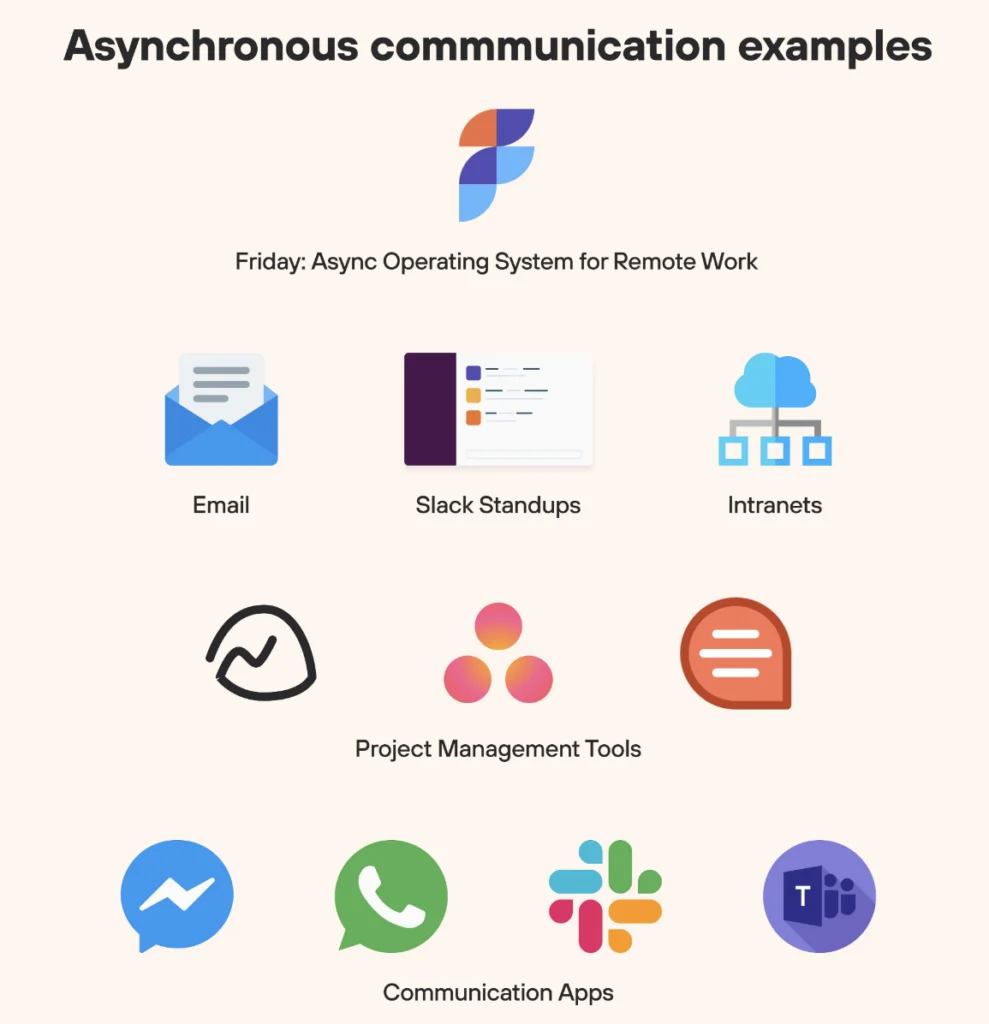What Is Asynchronous Communication and How Sales Teams Can Use It
Today there are dozens of ways your sales team can communicate. Whether you send a quick email, video chat, or collaborate on a project saved in the Cloud, the options are endless. Asynchronous communication is one method that is gaining popularity, especially due to the growth of remote work. It helps teams stay connected and communicate more effectively. What is asynchronous communication, and how does it work for a sales team?
Find out more about what asynchronous communication is in the workplace and how to use it to improve your sales team’s productivity.
Key Takeaways:
- Asynchronous communication is communication that doesn’t occur in real-time.
- Over half of businesses support remote work and could benefit from asynchronous communication to stay connected.
- Asynchronous communication is more flexible as each party can respond on their schedule, improving your productivity.
- Saving your communications allows you to reference them in the future and use it for training new employees.
What Is Asynchronous Communication?
Asynchronous communication is messages sent and received on each person’s own time. It plays an essential role in workforce optimization to improve productivity while eliminating interruptions.
It’s the opposite of synchronous communication, which is real-time communication. For example, synchronous communication might be a phone conversation, video conference, or chat message where all parties are present and listening in real-time. They are then able to respond immediately.
Synchronous communication is ideal for brainstorming or conversations that require interaction or immediate responses. It helps you accomplish tasks faster.
However, getting everyone on the same schedule is difficult, especially if team members or recipients work remotely or in a different time zone. Asynchronous communication enables sales teams to work on their schedule while maintaining consistent communication and better collaboration.
Examples of Asynchronous Communication
Here are a few examples of asynchronous communication and asynchronous communication tools in the workplace:
- Messaging tools like Facebook Messenger
- Collaboration platforms like Slack
- Project management tools like Asana
- Video tools like Loom
- Collaborative office software like Google Drive

Image from Friday
5 Ways Sales Teams Can Use Asynchronous Communication
These five uses of asynchronous communication will improve your sales team’s collaboration and productivity.
1. Support Remote Work
Roughly 16% of organizations are fully remote. Only 44% of businesses don’t offer any remote options for their workers. With over half of companies offering remote work environments, they must adopt software supporting this hybrid system.
When your sales team isn’t all in the same office building, synchronous communication becomes more difficult. Asynchronous communication allows your team to stay connected without traveling to the same building or working in the same time zone.
Allowing remote work improves your productivity as 40% of remote workers say they can achieve more when working from home. The reason is there can be fewer distractions, they are happier at work, and they have more flexibility to work when it’s most convenient.
In addition, 68% of the workforce would prefer a remote position and would even be willing to take a pay cut for the ability to work remotely.

Image from Zippia
2. Offer More Flexibility
Adopting asynchronous communication offers your sales team more flexibility when communicating with each other. For example, a phone call or employees stopping at each other’s desks interrupts workflows. After the conversation, that worker would take several minutes to get back into their tasks, hurting their productivity.
Studies found that employees can take nearly 30 minutes to refocus after an interruption. Multiple interruptions a day might mean your employees can never entirely focus on their tasks at hand.
Asynchronous communication allows each person to send messages and respond on their schedule instead of depending on each other’s schedule. As a result, they can stay focused while working on jobs and only check messages when available.
3. Save Communication for Future Use
Asynchronous electronic communication always leaves a record of the interaction for future reference or distribution. However, when you rely on in-person meetings, phone calls, and video chats for your meetings, you also lose much of what was said.
When you have a record of communication, employees can refer back to the chat when performing tasks, send those messages to other members, or save it for future training.
For example, businesses might record a Loom video demonstrating how to use new software. Then, you can distribute that video to anyone currently using that software. In addition, you can store that video and share it when new employees join the team, allowing everyone access to the same materials.
4. Decrease Miscommunication
Miscommunication costs large companies $62 million annually. This can occur in sales because of siloed data, misaligned teams, and lacking information. When each department within your business works separately, there will be miscommunication.
However, asynchronous communication connects departments and allows a freer flow of information. It’s also an effective way of connecting your sales and marketing teams since the modern buyer’s journey requires increased collaboration. In addition, it helps you to create a unified multichannel marketing strategy.
Through asynchronous communication channels, you can send messages between departments, share sales meetings with other relevant parties, and include all members in key communications. This keeps everyone on the same page and reduces the amount of miscommunication.
5. Improve Message Delivery
When each party can take their time responding, they have the chance to think through their answers. This can improve the delivery of communication. Parties have time to research, process ideas, and talk to others before writing a message back.
In addition, when you remove the personal interaction of real-time communication, people tend to be more honest. For example, if someone gives feedback face-to-face, they might feel more inclined to soften the message and leave out key points. However, sending a message the other person doesn’t see in real-time encourages people to be honest.
Connect Your Sales Teams
Losing leads due to miscommunication and data siloes can cause significant revenue loss for companies. However, a phone conversation isn’t always enough to eliminate this issue. Instead, you must establish reliable and easily accessible asynchronous communication channels that complement your synchronous communication and unite your teams.
Televerde offers solutions for connecting your marketing and sales teams to create a unified omnichannel experience for your customers.
Contact us to learn more about our customer journey solutions.


